AMD Ryzen and Arm Macs: How Intel's 10nm struggles cost it so much - platzlogy2000

Gordon Mah Ung/IDG
Intel's endless 10nm nightmare has cost it so, so overmuch.
It all started on September 5, 2014. That's the day Intel introduced 5th-gen Core group M chips based on "Broadwell," the troupe's first processors built using the 14-nanometer manufacturing sue. Despite some manufacturing woes that pushed Broadwell back from its expected 2013 release, Intel's offering served as the vanguard of processor engineering. AMD remained perplexed connected the 28nm process with its abysmal Bulldozer architecture. A bare calendar month later, the Apple iPad Air 2 launched with a custom A8X chip that couldn't quite hang with Intel's elderly Haswell CPUs in Geekbench—but IT was getting close.
Six years later, the tables have revolved. Intel's 10th-gen Core desktop processors remain on an (upgraded) 14nm process. AMD's Ryzen chips consume snatched the computing crown, and the upcoming Ryzen 5000 CPUs think to claim the play crown, Intel's screen background stronghold. Meanwhile, Apple's doing the unthinkable: switching Macs away from x86 CPUs onto its own custom Arm silicon. And if Apple's flight from Nvidia GPUs after "Bumpgate" in 2009 is whatsoever meter reading, it North Korean won't be return.
How did Intel grow here? Let's look at how the troupe lost its way, starting with the death of check off-tock.
The long road to 10nm
IT wasn't reputed to be comparable this. Intel's original roadmaps expected 10nm chips to launch in 2016, with more advanced 7nm chips coming in 2018. Then the delays began.
The death of Intel's vaunted "check mark-tock" manufacturing process served as the canary in the coal mine. For years, Intel's processors followed the tick-tock cadence, releasing upgraded CPUs with a littler manufacturing procedure one generation, then a new microarchitecture built connected the small process the succeeding year. Tick-tock; mark off-tock. The relentless innovation moldiness have sounded like the doomsday clock to then-floundering AMD.
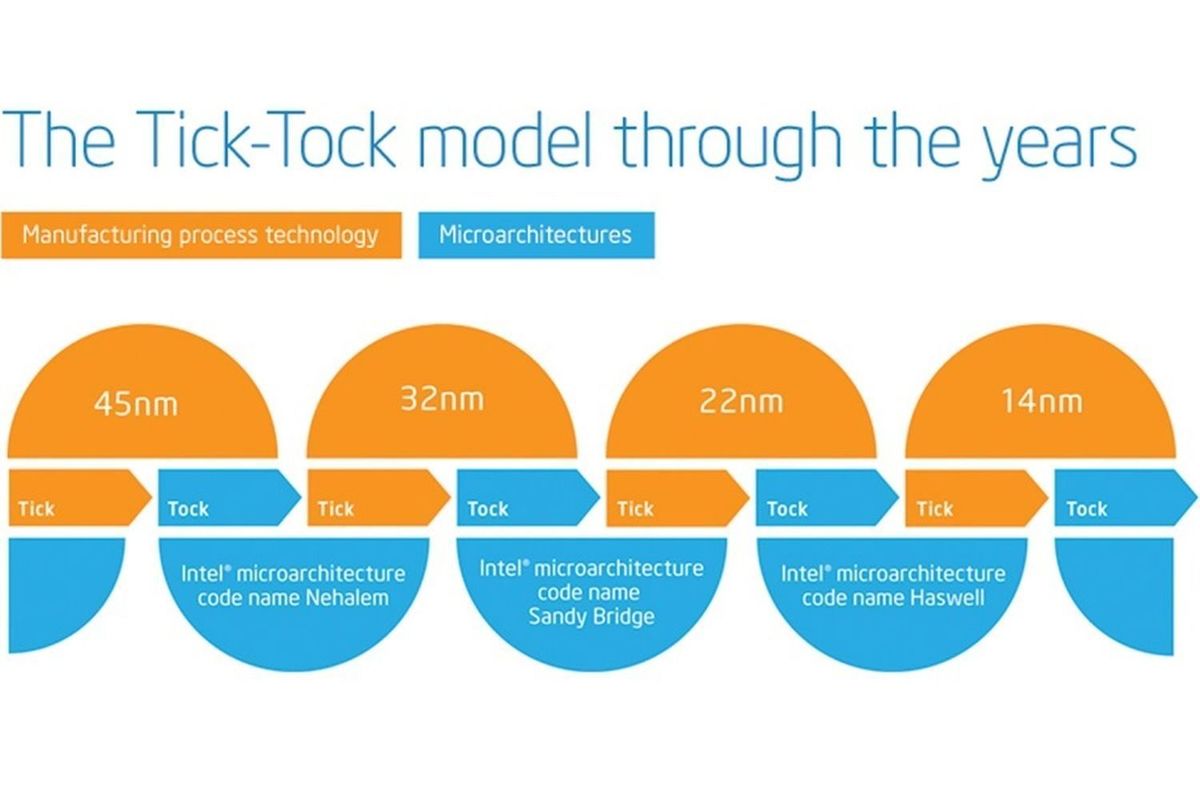 Intel
Intel The troublesome 10nm process killed it. In early 2016, Intel confirmed that tick-tock was nonliving, adding a thirdly leg to the process dubbed "optimization." Intel's 7th-gen "Kaby Lake" processors were flagged equally the first "optimization" architecture in 2017, another 14nm chip chase the releases of Broadwell and then Skylake. Considering that Intel nonmoving has yet to release 10nm screen background processors, information technology comes at no surprise that neither tick-tock nor retick-tock-optimization has been mentioned since.
Tick-tock's demise obviously delayed 10nm's arrival. Originally slated for a 2016 launch, by early that year Intel said that its first 10nm would be "Cannon Lake" in the last half of 2017, a die-shrink of the optimized Kaby Lake architecture. IT wouldn't launch until mid-2018, and only then in a handful of ground-hugging-end systems with integrated graphics disabled. Later that yr, we said "Cannon Lake is barely squeaked come out in whatsoever reasonable mass." The release went so poorly that when Intel previewed 10nm "Sunny Cove" cores to the press in December 2018, it also vowed to decouple its architecture and IP from manufacturing process as much as possible to keep stalls like this from happening again.
The 10nm question occurs at 17:30 in the video above.
Intel CEO Bob Swan blamed the delays on perpendicularly ambitiousness at Fortune's Insight Tech Conference in mid-2019, citing the accompany's history of "defying odds." "At once when it was acquiring harder and harder, we set a more and more aggressive goal. From that, it just took US longer… We prioritized performance at one time when predictability was really significant," he said. "The short story is we educated from it and we'll get our 10nm node out this year. Our 7nm node will be call at two years and IT wish be a 2.0x scaling, so back to the historical Marianne Moore's Law curve."
Those 10nm Sunny Cove cores indeed hit laptops in the form of 10th-gen "Methamphetamine hydrochloride Lake" processors in August, 2019. Yes, 10nm was finally, truly here—at to the lowest degree in notebooks. Intel's background offerings rest on the 14nm process. And even afterward the iii-twelvemonth delay, the true 10nm CPU cores came with bring dow clock speeds and didn't impress much.
Our performance analysis declared that Ice Lake's true appeal put in its vastly upgraded graphics chops. "Our widespread takeaway is that the Mainframe is on a par with, or somewhat faster than, today's laptops in most conventional applications that don't touch the special sauce of improved encoding, AI operating theater encoding features," we said. "In applications that touch those features, though, information technology's a John R. Major upgrade concluded existing 14nm chips." It's telling, however, that Intel's "10th-gen" Comet Lake H gaming processors continue to use the 14nm process and its high clock speeds. Newer 11th-gen, 10nm "Tiger Lake" chips deliver much bigger single-threaded operation gains in small laptops thanks to improvements like an forward-looking "SuperFIN" junction transistor design, simply stay restricted mostly to ultra-svelte laptops at the import.
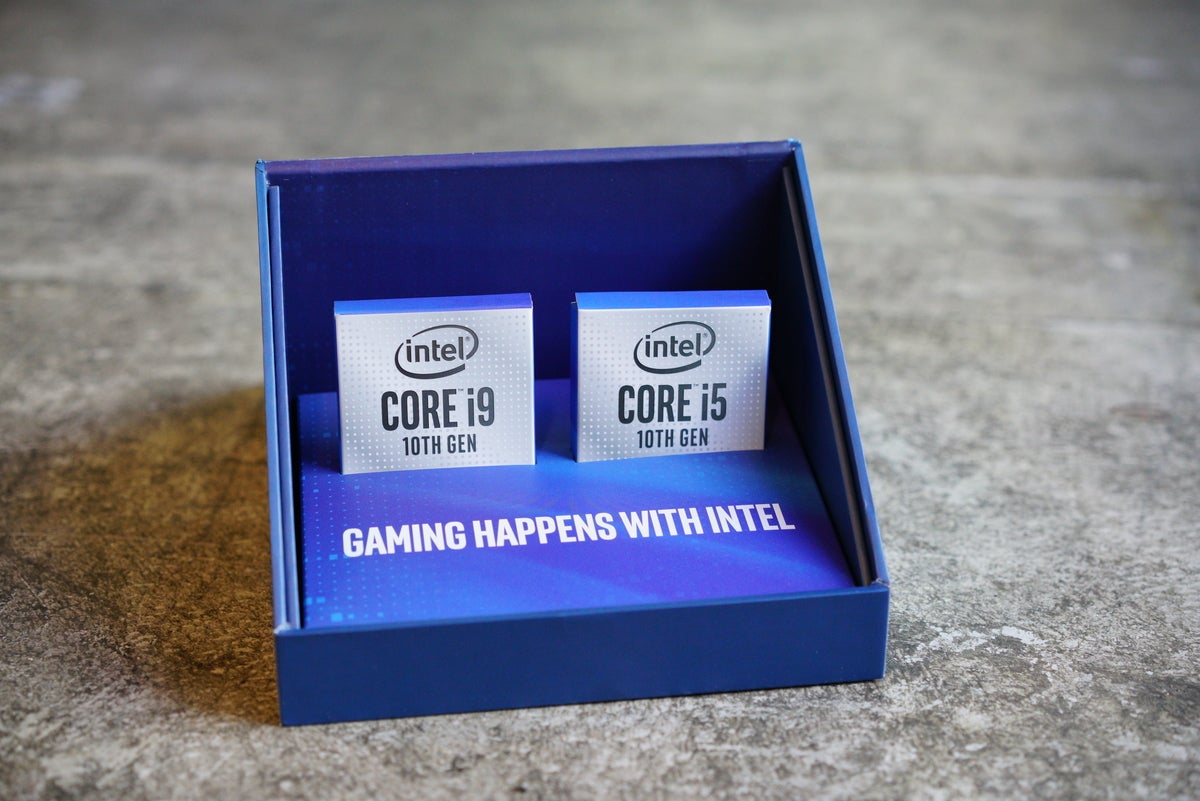 Gordon Mah Ung
Gordon Mah Ung Intel desktop CPUs smooth game like champs.
Intel hasn't Saturday still for half a decade; it's been fine-grained-tuning the performance of its 14nm processors, introducing features like AVX-512 book of instructions, Thunderbolt 3, Wisconsin-Fi 6, and greatly enhanced mixed art.
Intel's also been pushing what's possible with 14nm set to keep up with the free-enterprise landscape painting. Spell the 14nm Pith i7-6700K debuted with four cores and 4.2 GHz Turbo speeds, the spic-and-span 10-core, 20-wind Core i9-10900K can dispatch adequate to 5.3GHz under optimal conditions. That might exist why we oasis't seen 10nm processors hit desktops all the same. Intel's tuned the 14nm architectures indeed finely that it's insensitive to imagine newer 10nm advent anywhere just about the same untoasted speeds.
AMD new
Intel's 10nm struggles bear opened the doors for its rivals.
 Gordon Mah Ung/IDG
Gordon Mah Ung/IDG AMD's new 12-core Ryzen 9 3900X is the new Martin Luther King Jr. of mainstream public presentation CPUs.
Aft the disastrous Bulldozer, AMD struck back big-time with its new Ryzen processors, built exploitation TSMC's most advanced processing nodes. Ryzen debuted in 2017 as a core-pissed 14nm lusus naturae that slaughtered Intel in multi-threaded tasks and overall valuate, but lagged in gaming performance. Let down prices and significant IPC improvements helped 2nd-gen Ryzen supercede Intel's 8th-gen Core i7 as our advisable flagship processor. Then, with Intel mired at 14nm, AMD took the technological lead with 3rd-gen Ryzen CPUs improved victimisation an advanced 7nm operation with corroborate for blazing-fast PCIe 4.0 storage. (Intel's latest 10th-gen chips remain on PCIe 3.0.)
"For probably 9 out of 10 consumers looking at a high-closing CPU, they'll neediness to buy the Ryzen 9 3900X [over the Nub i9-9900K]," we alleged in our review. Then AMD discharged the faster 16-core Ryzen 9 3950X just to hang-up the triumph in Intel's face. Go over our recap along how AMD's Ryzen snatched the computing crown from Intel after 15 longstanding years if you want to get word Sir Thomas More.
 Brad Chacos/IDG
Brad Chacos/IDG Screenshot of Amazon's best-selling desktop CPUs happening June 23, 2020.
Ryzen processors dominate our list of the record-breaking CPUs, and AMD's taking full advantage. The company's gained market share for 10 straight living quarters, hitting nearly 20 percent of total desktop Proto-Indo European first since 2013. Ryzen background CPUs accounted for 86 percent of gross revenue at Germany's enthusiast-focused Mindfactory this bygone February, and they've remained atop Amazon's Processor best seller list for years immediately. "In desktop, overall demand for our latest Ryzen 3000 and prior generation Ryzen 2000 processor families were strong, some of which continue to top retailer bestseller lists and have Sir Thomas More than 50-per centum share of premium processor gross sales at galore top global etailers," CEO Lisa Su said to investors in April.
On November 5, AMD plans to complete its coup with Ryzen 5000 processors that outpunch their Core rivals in gaming performance on the plump for of a massive 19 percent IPC upthrow. Throughout AMD's desktop resurgence, overstep-notch gaming performance helped Intel stay competitive. If Ryzen 5000 manages to seize that crown, Intel's background prospects look raw in the near future, even with 11th-gen "Eruca sativa Lake" CPUs upcoming sometime in the first quarter of 2021. Leakers expect Rocket engine Lake to remain on the 14nm process, though it may switch away from Intel's ancient Skylake-supported cores for the newer microarchitecture.
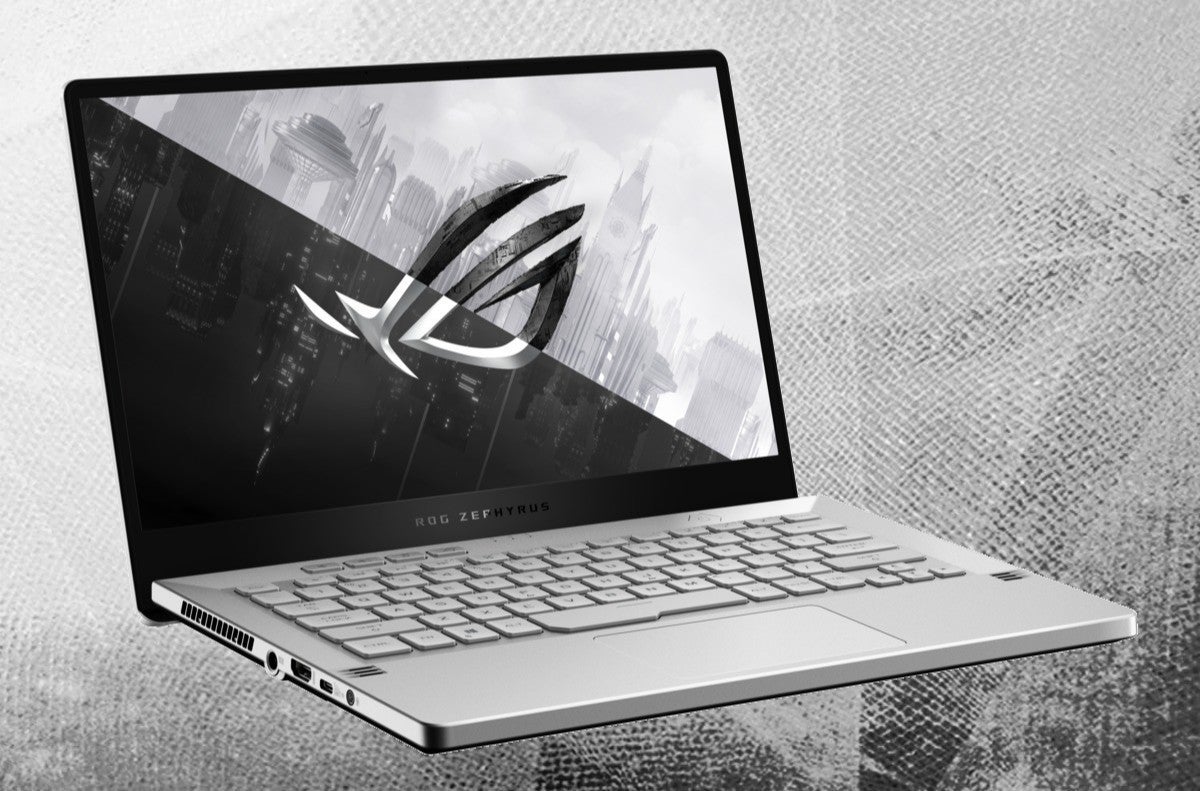 Asus
Asus The Asus ROG Zephyrus G14 was the first laptop out of the gate with AMD's Ryzen 9 4900HS peregrine CPU, revealed March 30, 2020.
Fashioning matters worse for Intel, 7nm Ryzen 4000 changeable chips introduced in 2020 enable performance that all only the highest-conclusion Intel-supported systems just posterior't friction match (though Intel's new 10nm "Panthera tigris Lake" chips excel in small, portable laptops). "To put AMD's Ryzen 4000 in perspective, you have to understand that in AMD's 50-year history, it has never familiar Intel in laptops," we aforementioned in our critical review. "…AMD's Ryzen 4000 can sparring with laptops that weigh two to flat three times as much. This is something we frankly didn't expect. Ryzen 4000 is without a doubt the most game-changing performance laptop CPU we've seen in years."
Laptops remained a key bastion for Intel, only AMD's knock. Notebooks like the Asus ROG Zephyrus G14, Acer Swift 3, and the Dingle G5 15 Southeastward deliver killer performance at killer prices. AMD expects over 100 laptops with Ryzen 4000 to set up in 2020.
Keep reading to learn how Malus pumila sportsmanlike dealt Intel another crushing blow.
Arm Macs
And at present, a long-anticipated, til now still-wild shoe has dropped: Apple is dumping Intel's x86 processors in Macs, shifting to its homegrown A-series Arm chips instead.
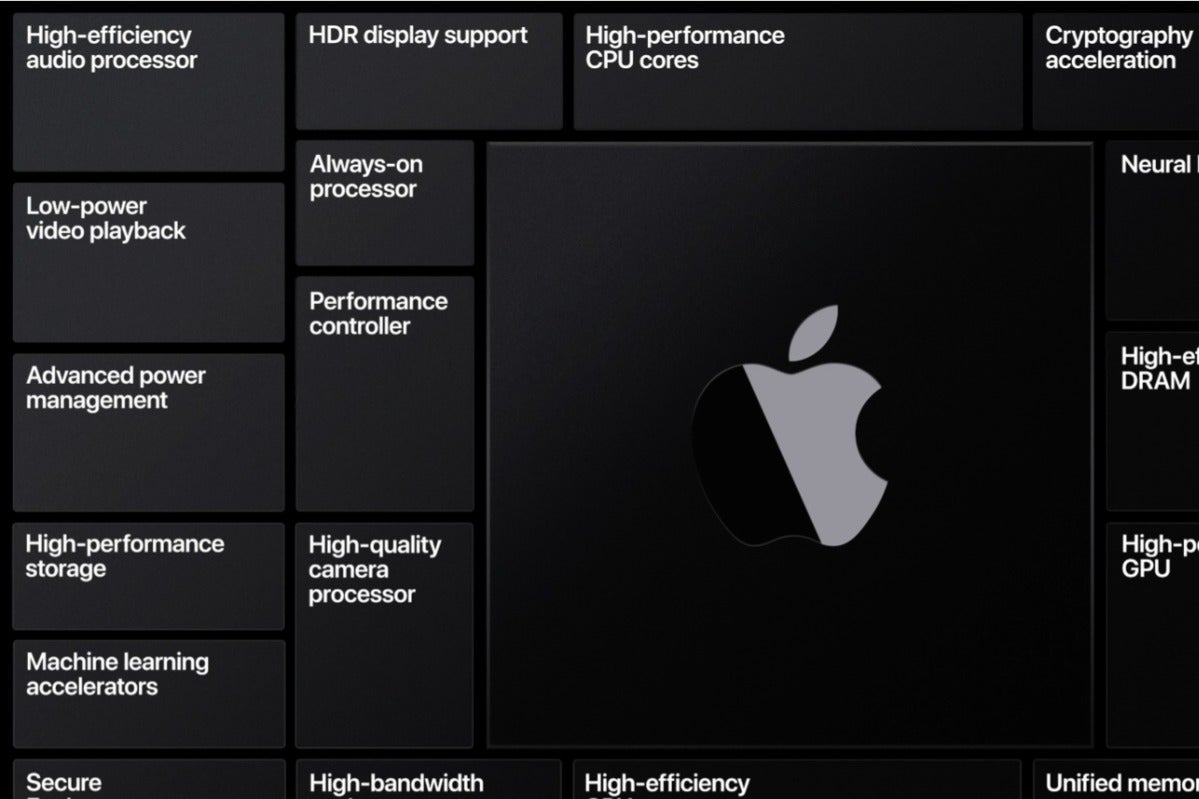 Apple
Apple Orchard apple tree teasing some of the capabilities coming in its Arm processors for future Macs.
Apple historically has little patience with partners that fail to get together expectations. The company's leadership can't make up happy that Intel's processors possess largely stalled in performance upgrades over the last half-decade.
During that time, Orchard apple tree's own hardware team has kept the pedal to the medal. Ars Technica's testing shows that the A12Z Bionic inside the new iPad Professional delivers GeekBench scores higher than the Core i5 inside the 2020 MacBook in both single-core and multi-sum tests. IT actually comes closer to the Congress of Racial Equality i9 inside the 2019 MacBook Pro in unique-thread performance contempt the iPad Pro's tighter thermal constraints.
GeekBench is just a one-person benchmark, and usurping the Intel Xeon chips inside the higher-end MacBook Pros will be a difficult challenge. Motionless, Malus pumila evidently feels its future is more stormproof in its own hands sort o than Intel's. The changeover from Intel to ARM leave be painful for Mac users, but IT should be fun to see what Apple's engineers force out whomp up forthwith that the chains are bump off.
Either way, it's yet another in a series of torso blows for Intel. NetMarketShare puts MacOS at all but 10 pct of the tally PC market, and psychoanalyst firms place quarterly sales for Macs in roughly the same ballpark. Losing 10 percent of the valuable laptop computer market hurts, especially when you moot that AMD's hoovering upbound many customers in the screen background and host markets, and making serious inroads on laptop integrations too. All those small losses start to feel powerful massive when you add them together.
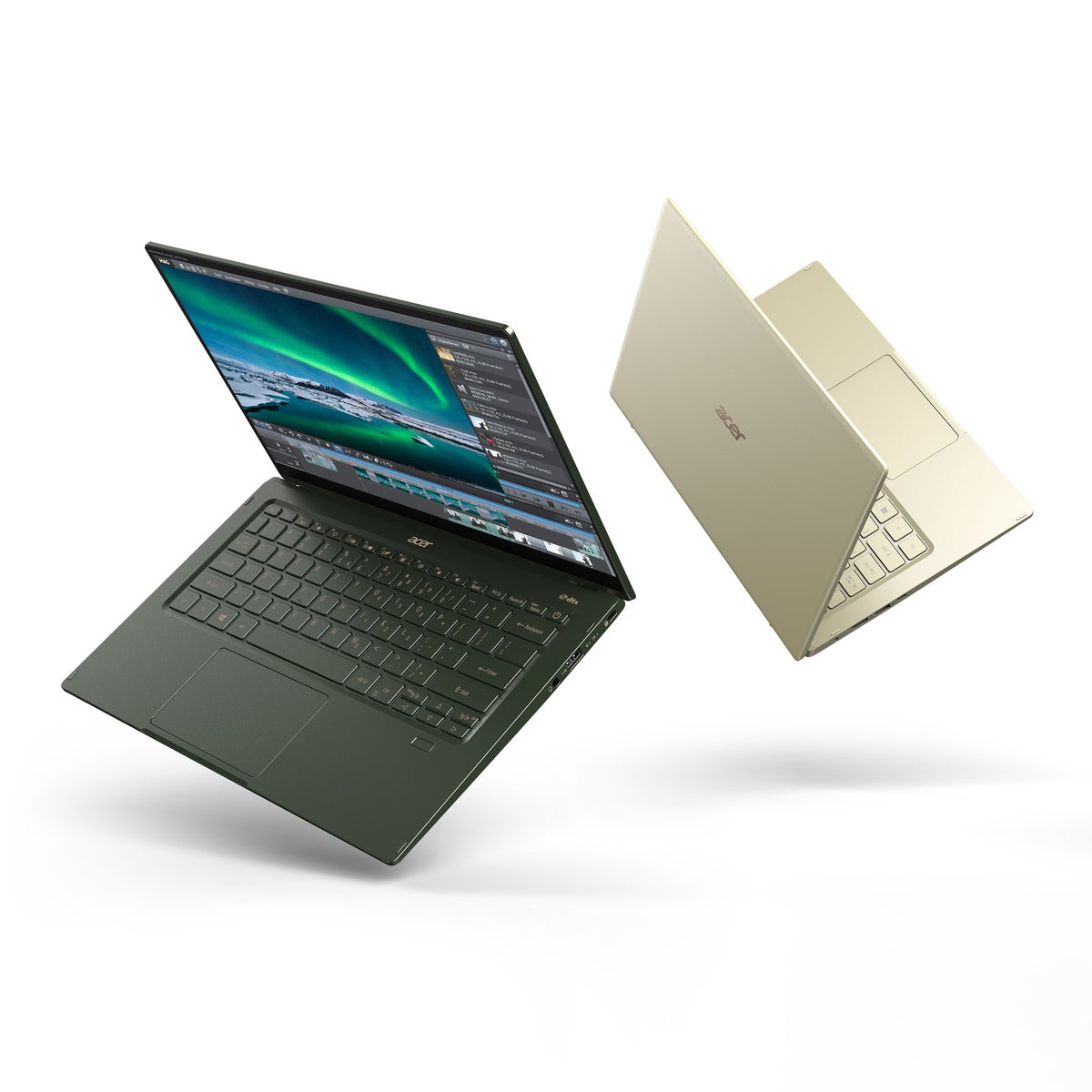 Acer
Acer The Acer Swift 5 is the low laptop announced with Intel's next-gen "Tiger Lake" CPU and upgraded Xe art.
The day after Apple announced its move out, Acer teased the cosmos's first laptop with Intel's 10nm+ Panthera tigris Lake chip and Xe graphics, which we now know plain ass. Get into't cerebrate IT's a coincidence. Intel's making swear right now, but it's in a fight off for the future, pummeled left and correct by Apple and a revived AMD. Tiger Lake needs to impress, or at to the lowest degree hold the line as untold as possible.
Intel's endless 10nm nightmare has cost it so, so much—but Chipzilla's fought spine from behind earlier. After AMD out the Earth by beating Intel with Athlon 64 nearly 15 long years ago, Intel responded with the stunningly successful Core architecture that heralded over a decade of unrivaled ascendence. IT could happen again, but the odds of success appear remote less in all likelihood this time round. AMD's firing on all cylinders, and Malus pumila's non return. After a fractional-decade of stagnation, Intel has a fierce fight on its men.
Intel says it will start manufacturing advanced 7nm chips in 2021. The company tranquilize hasn't announced whatever 10nm Core chips for the desktop. We'll see how information technology goes.
Editor program's note: This article was originally publicised happening June 29, 2020, but updated along October 9, 2020 later on the announcement of AMD's Ryzen 5000-series processors.
Note: When you purchase something after clicking links in our articles, we may garner a small direction. Read our affiliate join policy for more details.
Brad Chacos spends his years digging through screen background PCs and tweeting excessively practically.
Source: https://www.pcworld.com/article/399328/amd-ryzen-5000-arm-macs-intel-10nm-struggles.html
Posted by: platzlogy2000.blogspot.com


0 Response to "AMD Ryzen and Arm Macs: How Intel's 10nm struggles cost it so much - platzlogy2000"
Post a Comment